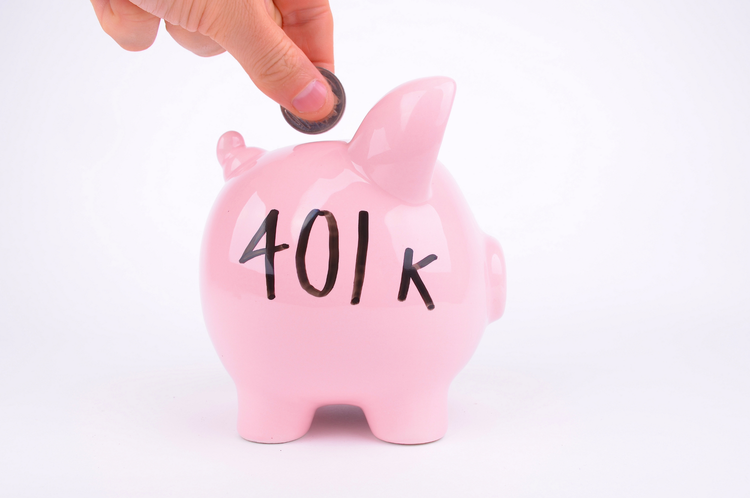Whether you live in Texas or Puerto Rico, you’ll receive quite a bit of useful information from this article.
What Is It?
A target benefit plan is a type of money purchase pension plan. It is often referred to as a 'hybrid' plan because, although a money purchase pension plan, target benefit plans include features commonly associated with a defined benefit plan. Like a defined benefit plan, annual contribution calculations are based upon a specified projected retirement benefit (the target benefit).
However, as with other money purchase pension plans, annual contributions (which are both fixed and mandatory) are made to individual participant accounts, and the actual retirement benefit a participant ultimately receives depends upon his or her individual account balance.
Tip: A target benefit plan is a type of qualified defined contribution plan. Because target benefit plans utilize participant age as one of the factors in determining plan contributions, these plans generally result in a contribution allocation that tends to benefit older participants.
Caution: Target benefit plans have become increasingly less common. To a large extent, this is attributable to the increased adoption of cross-tested profit sharing plans (e.g., age-weighted profit-sharing plans), which offer comparable advantages but are generally more flexible.
Contributions
Target Benefit Is Determined
Target benefit plans derive their name from the fact that such plans specify a target benefit for each participant at normal retirement age. This target benefit is typically defined by a formula similar to the formula utilized by defined benefit plans, and will generally be based on a percentage of compensation (e.g., 50% of final compensation) as well as on years of service.
Additional Articles You May Enjoy:
For example, a target benefit plan might specify a normal retirement age of 65 and a target benefit of 60% of final compensation for participants with 25 years or more of service; participants with less than 25 years of service would receive a proportionately smaller target benefit. In this case, participants 40 years old or younger (who could qualify for the full 25 years of service requirement prior to reaching the normal retirement age of 65) would receive contributions based on a target benefit of 60% of their final compensation. Individuals older than 40, however, have less than 25 years before reaching normal retirement age and would receive contributions based on a prorated benefit percentage.
Featured Video
Articles you may find interesting:
- Corporate Employees: 8 Factors When Choosing a Mutual Fund
- Use of Escrow Accounts: Divorce
- Medicare Open Enrollment for Corporate Employees: Cost Changes in 2024!
- Stages of Retirement for Corporate Employees
- 7 Things to Consider Before Leaving Your Company
- How Are Workers Impacted by Inflation & Rising Interest Rates?
- Lump-Sum vs Annuity and Rising Interest Rates
- Internal Revenue Code Section 409A (Governing Nonqualified Deferred Compensation Plans)
- Corporate Employees: Do NOT Believe These 6 Retirement Myths!
- 401K, Social Security, Pension – How to Maximize Your Options
- Have You Looked at Your 401(k) Plan Recently?
- 11 Questions You Should Ask Yourself When Planning for Retirement
Tip: Alternatively, a target benefit plan might provide for a target benefit calculated by granting a specific benefit for each year of service, up to a stated maximum. For example, a target benefit plan could provide for 2.4% of compensation for each year of service up to a maximum of 25 years.
Caution: The target benefit exists for purposes of determining current contribution amounts — it does not represent the expected benefit payout to individual participants. The benefit that a participant actually receives upon reaching normal retirement age depends upon the investment performance of the participant's individual plan account.
Contribution Amounts Are Calculated Based on Determined Target Benefits
Once a participant's target benefit is determined according to the plan's provisions, a contribution calculation for each participant is made. The calculation assumes that a participant will receive the same contribution every year until reaching normal retirement age. The amount each participant receives as a contribution is the annual amount needed to fund that participant's target benefit (based on appropriate assumptions and projections).
Tip: In order to calculate the actual contribution required for each participant, actuarial calculations are required that factor in the participant's age and the projected rate of return for the funds in the participant's account.
An assumption is made that the participant's compensation remains level throughout his or her years of service for purposes of the contribution calculation. When a participant's compensation does in fact increase, this will result in a new, higher target benefit for that participant. Future contribution calculations for that participant will be based on this new, higher target benefit.
Caution: The actual investment performance of individual participant accounts plays no role in determining required annual participant contribution amounts.
Caution: As with any money purchase pension plan, target benefit plans can generally allocate additional plan funds to higher-paid employees by taking into account permitted disparity (often referred to as 'integrating with Social Security'). However, target benefit plans must follow the permitted disparity rules of defined benefit plans. These rules are significantly more complicated than the defined contribution permitted disparity rules that apply to other money purchase plans.
Mandatory Contributions Are Made to Participant Accounts Each Year
When the contribution needed to fund a specific retirement benefit has been determined, it is fixed at that level and generally will not change (except to reflect a salary increase or decrease), regardless of the participant account's actual investment return. The required annual contribution must be made each year regardless of fluctuations in business revenues or cash flow.
How Does a Target Benefit Plan Differ From a Defined Benefit Plan and Other Money Purchase Pension Plans?
With a defined benefit plan, if the actual performance of plan investments differs from the assumptions used, the employer must either increase or decrease its future contributions to the plan as needed to provide the promised benefits. With a target benefit plan, however, the employer's contributions to the plan are allocated to separate accounts maintained for each participant. If plan investments perform better or worse than assumed, this does not result in any change in the level of employer contributions.
Instead, the actual benefits a participant receives from the plan may be higher or lower than the target benefit. The main difference between target benefit plans and other money purchase pension plans is that with other money purchase pension plans, contributions are generally determined and allocated as a percentage of each participant's annual compensation.
This means that contributions will generally be identical for two employees with identical compensation, even though their ages might be different. In contrast, a target benefit plan determines and allocates contributions based on the target benefit amount; therefore, an employee's age is one of the factors in calculating contributions to his or her account. Target benefit plans generally have the effect of increasing contribution amounts to older employees.
What Types of Employers Can Have a Target Benefit Plan?
Virtually any employer can establish a target benefit plan. However, this type of plan is not necessarily appropriate for all employers. Given that these plans require specified contributions each year, they are generally most suitable for employers that have consistent cash flow and do not need to have discretion over the level of annual contributions.
Tip: Nevertheless, the fixed contribution obligation that is part of money purchase pension plans (including target benefit plans) may appeal to employees, and an employer might consider adopting a target benefit plan for that reason. Employers might also value the fact that target benefit plans tend to favor older participants.
Tip: If you are self-employed, the specific type of target benefit plan that you may adopt is sometimes called a Keogh plan.
Tax Benefits of Target Benefit Plans
Tax Considerations for Employees
The employer contributions made to a target benefit plan on behalf of a participating employee are not included in that employee's taxable income. The employee will not pay income tax on the money contributed to the plan account as long as that money remains in the plan. Similarly, funds held in the target benefit plan grow on a tax-deferred basis. This means that any earnings from plan investments are not included in the employee's taxable income as long as they remain in the plan.
Of course, when a participating employee begins to receive distributions from the target benefit plan during retirement, he or she will be subject to federal (and possibly state) income tax on both plan contributions and related investment earnings. However, the rate at which a plan distribution is taxed depends on the employee's federal income tax bracket in the year of receipt, and many employees may be in a lower tax bracket by the time they begin receiving distributions. If an employee receives a distribution from the plan prior to age 59½, he or she may be subject to a 10% premature distribution penalty tax (unless an exception applies), in addition to ordinary income tax.
Tip: If a participating employee elects to take a lump-sum distribution from the target benefit plan, he or she may be eligible for special tax treatment to reduce the income tax rate on the distribution. To qualify, the employee must have been born before 1936, and other requirements must be met.
Tax Deduction for Employer
As with all qualified retirement plans, an employer establishing and maintaining a target benefit plan can receive significant income tax benefits. Employer contributions to the plan are generally tax deductible on the employer's federal income tax return for the year in which they are made.
Target benefit plans are treated in the same manner as profit-sharing plans for purposes of calculating deductible employer contributions. Thus, tax-deductible employer contributions cannot exceed 25% of the total compensation of all employees covered under the plan. Any contribution in excess of this limit is not tax deductible, and may also be subject to a federal penalty. For purposes of calculating an employer's maximum tax-deductible contribution, the maximum compensation base that can be used for any single plan participant is $285,000 in 2020 (up from $280,000 in 2019).
Caution: Annual additions to any single participant's plan account are limited to the lesser of $57,000 (in 2020, up from $56,000 in 2019) or 100% of the participant's pre-tax compensation. Annual additions include total contributions to the participant's plan account plus any reallocated forfeitures from other plan participants' accounts. This may limit the relative amount of funding for older, highly compensated employees. By contrast, a defined benefit plan may allow a much higher level of employer funding for such employees.
Other Advantages of Target Benefit Plans
This Type of Plan May Appeal to Older Employees
Because the retirement benefit under a target benefit plan is based partially on the participant's age, this type of plan may appeal to employers that wish to benefit older employees. Participating employees who enter the plan at older ages have fewer years than younger employees until retirement. Using a target benefit plan can help allocate larger contributions to these older employees.
Tip: For a plan to provide benefits that will be equally valuable to all employees at retirement age, the plan must provide higher immediate contributions for older workers than for younger workers.
Example(s): Arnold and Abe are both to be provided with $1,000 at age 65. Arnold is 30 years old and Abe is 50 years old. Assuming an 8.5% annual rate of return, $294 needs to be contributed today for Abe to have $1,000 in 15 years at age 65. By contrast, because Arnold has 35 years for his money to grow, only $58 needs to be contributed today to have the same $1,000 at age 65. This example is hypothetical and for illustrative purposes only. Investment returns will fluctuate and cannot be guaranteed.
A Target Benefit Plan May Be 'Integrated' With Social Security
Target benefit plans can utilize permitted disparity in allocating plan funds (this is commonly referred to as 'integrating with Social Security'). Essentially, integrating a retirement plan with Social Security is a way to allow a plan to pay more to higher-paid employees. Despite the non-discrimination requirements that generally govern qualified retirement plans, the law — to some extent — views the benefits provided by a qualified retirement plan and those provided by Social Security as a single retirement program.
Because Social Security benefits for lower-paid employees represent a greater percentage of salary than for higher-paid employees, the IRS allows a qualified plan to favor higher-paid employees within specified limits.
Caution: Target benefit plans must follow the permitted disparity rules of defined benefit plans. These rules are significantly more complicated than the defined contribution permitted disparity rules that apply to other money purchase plans.
Disadvantages of Target Benefit Plans
Other Plans May Offer Similar Benefits With Greater Flexibility
Target benefit plans have become increasingly less common. To a large extent, this is attributable to the increased adoption of cross-tested profit-sharing plans (e.g., age-weighted profit-sharing plans), which offer comparable advantages but are generally more flexible.
Annual Contributions Are Mandatory
A target benefit plan must provide annual contributions that will be sufficient to fund the target benefit for each participant in the plan. Regardless of how well or poorly the business may be doing, the employer is required to make the specified contribution to the plan each year. If the employer fails to do so, it may be subject to penalties. Employers that prefer to have greater flexibility with annual contributions may want to consider a type of plan that allows for discretionary contributions (such as a profit-sharing plan).
The Plan Is Subject to Various Federal Requirements
A target benefit plan must comply with nondiscrimination requirements, either through 'cross-testing' rules that test for nondiscrimination on the basis of projected retirement benefits under the plan, or through target benefit plan 'safe-harbor' requirements. In addition, as a qualified retirement plan, a target benefit plan is also subject to federal reporting and disclosure requirements under the Employee Retirement Income Security Act (ERISA) and the Internal Revenue Code (IRC). The services of a retirement plan specialist may be needed to ensure compliance with these various requirements.
Tip: ERISA doesn't apply to governmental and most church retirement plans, plans maintained solely for the benefit of non-employees (for example, company directors), plans that cover only partners (and their spouses), and plans that cover only a sole proprietor (and his or her spouse).
How to Set Up a Target Benefit Plan
Have a Plan Developed for Your Business
Due to the nature of the rules governing qualified retirement plans, you will most likely need a retirement plans specialist to develop a target benefit plan that meets all legal requirements, as well as the needs of your business. You will need to do the following:
- Determine the plan features most appropriate for your business: Carefully review your business, looking at factors such as cash flow and profits, desired tax deductions, how much you and your employees will benefit from the plan, and facts about your employee population (including years of service, ages, salaries, and turnover rate). This will assist you in determining appropriate plan features, including investment vehicles, contribution levels, and employee eligibility requirements.
- Choose the plan trustee: The assets of the target benefit plan must be held in a trust by a trustee. The trustee is responsible for managing and controlling the plan assets, preparing the trust account statements, maintaining a checking account, retaining records of contributions and distributions, filing tax reports, and withholding appropriate taxes. The plan trustee can be you or a third party, such as a bank.
- Choose the plan administrator: Administering the target benefit plan involves many duties, including determining who is eligible to participate in the plan, determining the amount of benefits and when they must be paid, and complying with reporting and disclosure requirements. The plan administrator may also be responsible for investing plan assets, and/or providing informational and required investment educational services to plan participants. You are legally permitted to handle these responsibilities in-house, but plan sponsors typically hire a third-party firm to assist with the duties of plan administration. Be sure to comply with ERISA's bonding requirements, if applicable.
Submit The Plan to the IRS for Approval
Once a plan is developed, if it is not a prototype plan previously approved by the IRS, the plan should be submitted to the IRS for approval. As there are a number of formal requirements that must be met (for example, you must provide a formal notice to employees), a retirement plan specialist should assist you with this task. Submission of the plan to the IRS is not a legal requirement, but it is highly recommended. The IRS will carefully review the plan and make sure that it meets all of the applicable legal requirements. If the plan meets all requirements, the IRS will issue a favorable 'determination letter.' Otherwise, the IRS will issue an adverse determination letter indicating the deficiencies in the plan that must be corrected.
Adopt the Plan During the Year for Which It Is to Become Effective
You must officially adopt your plan during the year for which it is to become effective, so plan ahead and allow enough time to set up your plan before your company's tax-year end. A corporation generally adopts a target benefit plan or other retirement plan by a formal action of the corporation's board of directors. An unincorporated business should adopt a written resolution in a form similar to a corporate resolution.
Provide Copies of the Summary Plan Description (SPD) to All Eligible Employees
ERISA requires you to provide a copy of the summary plan description (SPD) to all eligible employees within 120 days after your plan is adopted. A SPD is a booklet that describes the plan's provisions and the participants' benefits, rights, and obligations in simple language. On an ongoing basis you must provide new participants with a copy of the SPD within 90 days after they become participants. You must also provide employees (and in some cases former employees and beneficiaries) with summaries of material modifications to the plan. In most cases you can provide these documents electronically (for example, through email or via your company's intranet site).
File The Appropriate Annual Report With The IRS
Each employer that maintains a qualified retirement plan is generally required to file an annual report. The annual report is commonly referred to as the Form 5500 series return/report. Employers must file the appropriate Form 5500 series return/report for the target benefit plan for each plan year in which the plan has assets. Consult a tax or retirement plans specialist for more information.
Questions & Answers
What Employees Do You Have to Include In Your Target Benefit Plan?
In general, with respect to those employees who are eligible to be covered by the plan, you must include in a target benefit plan all employees who are at least 21 years old and have at least one year of service. Two years of service may be required for participation as long as the employee will be 100% vested immediately upon entering the plan. If desired, you can impose less (but not more) restrictive requirements.
Tip: For eligibility purposes, one year of service refers to a 12-month period during which the employee has at least 1,000 hours of service.
When Must Plan Participation Begin?
An employee who meets the minimum age and service requirements of the plan must be allowed to participate no later than the earlier of:
- The first day of the plan year beginning after the date the employee met the age and service requirements, or
- The date six months after these conditions are met
How Is Compensation Defined?
Compensation may be defined differently for different plan purposes. For determining the annual additions limitation, compensation generally includes all taxable personal services income, such as wages, salaries, fees, commissions, bonuses, and tips. It does not include pension-type income, such as payments from qualified plans, nonqualified pensions, and taxable compensation due to participation in various types of stock and stock option plans. In addition, compensation includes voluntary salary deferrals to 401(k) plans and cafeteria plans. (Employers have some flexibility to include or exclude certain items of compensation.) This definition also applies when determining which employees are highly compensated.
What Is A Highly Compensated Employee?
For 2020, a highly compensated employee is an individual who:
- Was a 5% owner of the employer during 2019 or 2020, or
- Had compensation in 2019 in excess of $125,000 and, at the election of the employer, was in the top 20% of employees in terms of compensation for that year. (This $125,000 limit rises to $130,000 in 2020.)
When Do Employees Have Part or Full Ownership of The Funds In Their Accounts?
The process by which employees acquire full ownership of their plan benefits is called 'vesting.' In general, employer contributions either must vest 100% after three years of service ('cliff' vesting), or must gradually vest with 20% after two years of service, followed by 20% per year until 100% vesting is achieved after six years ('graded' or 'graduated' vesting).
Caution: Plans that require two years of service before employees are eligible to participate must vest 100% after two years of service.
Tip: A plan can have a faster vesting schedule than the law requires, but not a slower one.
What Happens to an Employee's Account If the Employee Terminates Before He or She Is 100% Vested?
If a participant in a target benefit plan separates from service before being 100% vested in the plan, the employee will forfeit the amount that is not vested. The amount forfeited can then be used to reduce future employer contributions under the plan, or can be reallocated among the remaining plan participants' account balances. The IRS requires that forfeitures be reallocated in a non-discriminatory manner. This usually requires forfeiture reallocation in proportion to participants' compensation rather than in proportion to their existing account balances.
Do You Need to Receive a Favorable Determination Letter from The IRS In Order for Your Plan to Be Qualified?
No, a plan does not need to receive a favorable IRS determination letter in order to be qualified. If the plan provisions meet IRC and ERISA requirements, the plan is considered qualified and is entitled to the accompanying tax benefits. However, the issue of plan qualification for a given year will not arise until the IRS audits your tax returns for that year.
By that time, it may be too late for you to amend your plan to correct any disqualifying provisions. A determination letter helps to avoid this problem because auditing agents generally will not raise the issue of plan qualification (with respect to the 'form' of the plan as opposed to its 'operation') if an employer has a favorable determination letter (or if a preapproved 'prototype' plan is used).
What Happens If The IRS Determines That Your Plan No Longer Meets The Qualified Plan Requirements?
The IRS has established programs to help plan sponsors correct defects. These programs are designed to allow correction with sanctions that are less severe than outright disqualification. Your tax professional will be able to assist you in utilizing these programs should the need arise. However, if you are unable to correct the defects in your plan as required, the plan may be disqualified. Loss of a plan's qualified status results in the following consequences:
- Employees could be taxed on employer contributions when they are made, rather than when benefits are paid
- Your deduction for employer contributions may be limited
- The plan trust would have to pay taxes on its earnings
- Distributions from the plan become ineligible for special tax treatment (see above) and cannot be rolled over tax free
Do You Have Fiduciary Responsibility for Your Employees' Accounts?
You have a fiduciary responsibility to exercise care and prudence in the selection and appropriate diversification of plan investments. Liability for investment returns, however, is generally significantly reduced if participants are allowed to 'direct the investments' of their own accounts. A plan is considered 'participant-directed' if, among other requirements, it:
- Allows participants to choose from a broad range of investments with different risk and return characteristics
- Allows participants to give investment instructions at least as often as every three months
- Gives participants the ability to diversify investments, both generally and within specific investment categories
- Gives participants sufficient information to make informed investment decisions
Caution: If you sponsor a participant-directed plan, you assume responsibility for investment education of your participating employees. The challenge is to provide the appropriate level of investment education without becoming legally responsible for your employees' investment decisions. This is an issue to consider carefully when implementing a target benefit plan or other qualified retirement plan.
Tip: The Pension Protection Act of 2006 created a new prohibited transaction exemption under ERISA that lets certain related parties ('fiduciary advisers') provide investment advice to defined contribution plan participants if either (a) the adviser's fees don't vary based on the investment selected by the participant, or (b) the advice is based on a computer model certified by an independent expert, and certain other requirements, including detailed disclosure requirements, are satisfied. The Act also provides protection to retirement plan fiduciaries where an employee's account is placed in certain default investments in accordance with DOL regulations because the participant failed to make an affirmative investment election.
How can Northrop Grumman employees effectively maximize their retirement income, and what role do pension plans and personal investments play in this strategy? It's important for employees to understand how components like the Pension Plan Benefits, Savings Plan Benefits, and Social Security Benefits collectively provide a robust retirement framework. This question invites a detailed exploration of how Northrop Grumman's various programs interact, and what actions employees can take to ensure they are optimizing their retirement savings.
Maximizing Retirement Income at Northrop Grumman: Northrop Grumman employees can maximize their retirement income by effectively leveraging the combination of Pension Plan Benefits, Savings Plan Benefits, Social Security Benefits, and Personal Savings and Investments. Each component plays a crucial role: the pension plan provides a defined benefit based on salary and years of service, the savings plan offers a vehicle for tax-advantaged growth through employee and employer contributions, and social security offers a baseline of income adjusted for inflation. Employees should aim to maximize their contributions, particularly to the 401(k) plan, and manage their investments according to their individual retirement timelines and risk tolerance.
What are the different types of retirement benefits available to Northrop Grumman employees, and how do these benefits impact retirement planning? Employees should be aware of the distinctions between defined benefit plans, like the Heritage TRW, and defined contribution plans, such as the 401(k) Savings Plan. This question will allow an in-depth examination of how these benefits function and their significance in the context of Northrop Grumman's overall compensation structure.
Types of Retirement Benefits: Northrop Grumman offers both defined benefit and defined contribution retirement plans. The Heritage TRW Pension Plan, a defined benefit plan, bases pensions on final average earnings and years of service. The 401(k) Savings Plan, a defined contribution plan, allows employees to save and invest with tax advantages, with contributions from both the employee and employer. Understanding these plans' structures and benefits is essential for employees to plan effectively for retirement.
In what ways have recent changes to the Northrop Grumman Pension Program affected employees who are planning to retire in the near future? Understanding the specifics of benefit adjustments or freezing final average earnings will be pivotal for employees' retirement planning. This inquiry will encourage discussion around how these changes influence both current and future retirees regarding their readiness for retirement and their financial planning.
Impact of Recent Changes to Pension Program: Recent changes to the Northrop Grumman Pension Program, such as the freezing of the final average earnings calculation as of December 31, 2014, affect employees planning to retire soon. These changes may alter the expected retirement benefits for some employees, making it crucial for near-retirees to reassess their projected pension benefits under the new rules and plan accordingly to meet their retirement goals.
How do Northrop Grumman employees qualify for early retirement under the current pension plan, and what benefits can they expect? This question should delve into the eligibility criteria for early retirement based on age and years of service, as well as highlight the benefits associated with this option. It provides an opportunity to explore the trade-offs and advantages of opting for early retirement versus working longer.
Early Retirement Qualifications and Benefits: Northrop Grumman employees can qualify for early retirement if they are at least 55 years old with 10 years of vesting service, receiving benefits reduced based on early retirement factors. Understanding these factors and the impact on the retirement benefits can help employees decide the best age to retire to maximize their pension benefits while considering their personal and financial circumstances.
What essential steps should Northrop Grumman employees take to prepare for retirement, including understanding their pension plan and social security benefits? This question can explore the various resources available, such as tools and calculators provided by Northrop Grumman, and the importance of proactive planning. Employees should consider how their decisions today will influence their retirement lifestyle, including the necessity of accumulating both pension and social security benefits.
Preparation Steps for Retirement: Employees should take proactive steps such as utilizing Northrop Grumman’s retirement calculators, attending planning seminars, and consulting with financial advisors available through the Northrop Grumman Benefits Center. It's also important for employees to understand how their pension benefits interact with Social Security and personal savings to create a comprehensive retirement strategy.
What options do Northrop Grumman employees have for managing their savings after retirement, and how can they choose the best strategy for their individual needs? Discussion here can encompass the different methods for drawing down retirement accounts, the importance of balancing withdrawals with ongoing expenses, and considerations for managing longevity risk. It is crucial for retirees to think about how they will provide for themselves throughout their retirement years.
Post-Retirement Savings Management: After retirement, Northrop Grumman employees need to manage their withdrawals from savings plans carefully to sustain their income throughout retirement. Considering factors like withdrawal rates, tax implications, and investment risk will help in maintaining a stable financial status in the retirement years.
How does Northrop Grumman determine the final average earnings (FAE) used in calculating pensions, and what factors should employees consider to impact this calculation positively? This question could lead to a discussion about the significance of high-earning years, the concept that only the top five consecutive earning years count, and how employees can strategically plan their careers to boost their FAE for retirement.
Determining Final Average Earnings (FAE): Northrop Grumman calculates FAE for pension benefits based on the highest five consecutive years of earnings. Employees should aim to maximize their earnings during these peak years, as this will directly increase the pension benefits they receive upon retirement.
What are the specific vesting requirements for Northrop Grumman's pension plans, and why is understanding these concepts critical for employees? As employees may leave the company at various stages of their careers, grasping how vesting works can significantly affect their financial security. This question allows for a detailed discussion on how years of service translate into non-forfeitable benefits.
Understanding Vesting Requirements: Vesting in Northrop Grumman's pension plans requires completing three years of service, after which the benefits earned become non-forfeitable. Employees should be aware of their vesting status, especially if considering changing jobs, as it impacts their eligibility for pension benefits.
How can Northrop Grumman employees effectively utilize the resources available through the Northrop Grumman Benefits Center for their retirement planning needs? This question invites exploration of what tools and guidance are obtainable through the Benefits Center, including contact methods, online resources, and personalized retirement evaluations, allowing employees to make informed decisions about their retirement.
Utilizing Northrop Grumman Benefits Center Resources: The Northrop Grumman Benefits Center offers tools, resources, and support for retirement planning. Employees should frequently use these resources, such as the retirement income calculator and personalized consultations, to plan effectively for their retirement.
How can Northrop Grumman employees find additional information regarding their retirement options and resources, including the most effective ways to contact the Northrop Grumman Benefits Center? With a focus on how to access support and information, this question emphasizes the role of company resources in assisting employees with their retirement strategies.ã€4:4†source】
Finding Retirement Information and Support: Additional information about retirement options and resources can be accessed through Northrop Grumman's Benefits Online portal and the Benefits Center. Employees are encouraged to actively use these channels for up-to-date information and personalized support to navigate their retirement planning effectively.




-2.png?width=300&height=200&name=office-builing-main-lobby%20(52)-2.png)











-2.png)








